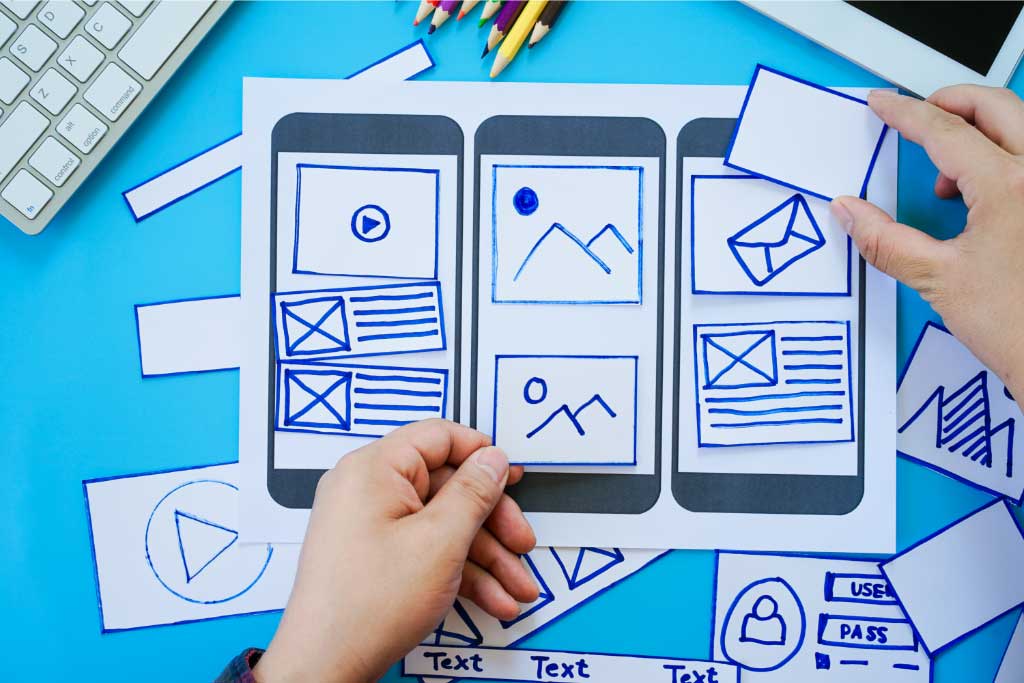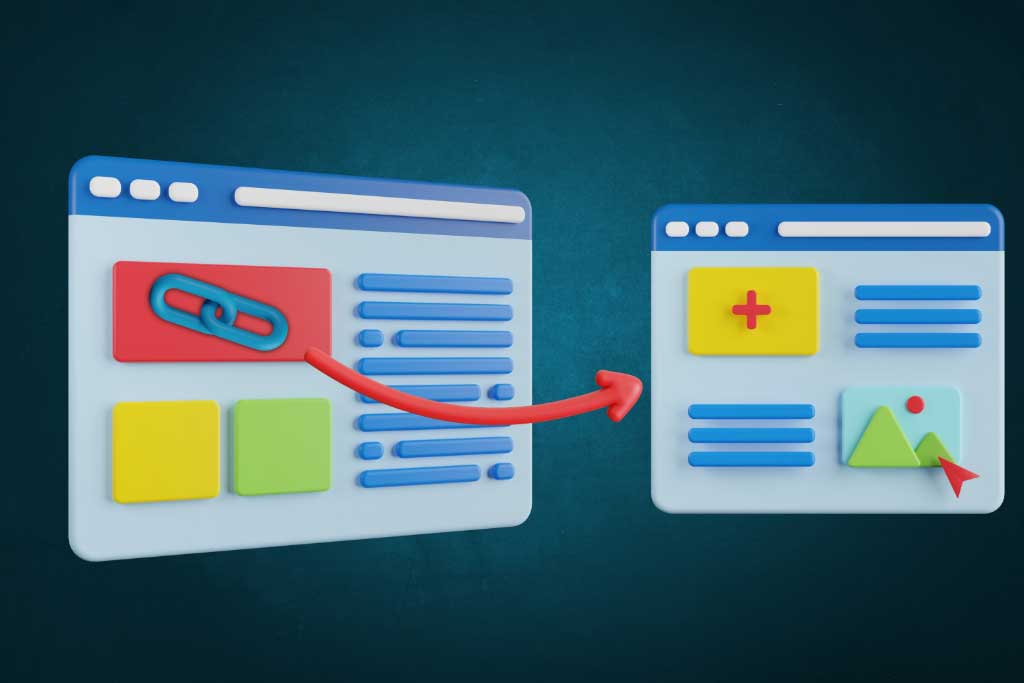In today’s digital landscape, where every click, swipe and scroll matters, UX design has become the secret sauce behind successful digital products. But what exactly is UX design, and why should it matter to you? Whether you’re a budding designer, a tech enthusiast, or a curious user, understanding UX design can offer you a new lens through which to view technology.
Discover the Art of UX Design and Transform Your Digital Experiences
In this guide, we’ll unravel the mysteries of UX design, exploring its core principles and methodologies and the profound impact it has on how we interact with technology. Join us on this exploration to see how UX design shapes our digital world.
The Definition of UX Design
To start, UX stands for User Experience. At its core, UX design revolves around creating products that offer meaningful and relevant experiences to users. It’s not just about aesthetics or beauty; it’s about ensuring that a user’s interaction with a product is smooth, intuitive, and enjoyable. UX design encompasses everything from the initial research phase to the final product launch, always centering on the user’s needs and preferences.
UX design is multidisciplinary. It combines psychology, design, research, and technology to solve problems and enhance user satisfaction. Understanding user behavior is paramount, and designers employ various tools and techniques to gain insights into users’ minds. Ultimately, UX design aims to create products that don’t just meet user expectations but exceed them, leaving a lasting positive impression.
UX design is indispensable in the realm of digital products. It shapes websites, apps, and software, determining how users interact with them. From navigation to functionality, every aspect of a digital product is influenced by UX design. Businesses can build loyalty, retain customers, and achieve a competitive edge by focusing on user satisfaction.
The Importance of UX Design
Why is UX design such a big deal? A seamless user experience can make or break a product in an era where users have endless options. Imagine opening an app and immediately getting frustrated because you can’t find what you’re looking for. This frustration can lead users to abandon the product and seek alternatives. UX design aims to prevent this by creating user-friendly and intuitive interfaces.
One key benefit of UX design is its ability to boost customer satisfaction. When users find a product easy and enjoyable, their satisfaction levels increase, leading to higher retention rates. A well-designed user experience fosters trust and loyalty, turning users into brand advocates more likely to recommend the product to others.
Furthermore, UX design has a direct impact on business success. Companies that prioritize UX design often see a significant return on investment. A seamless user experience can drive higher conversion rates, increase sales, and reduce costs associated with customer support. In a competitive market, investing in UX design is not just a choice; it’s a necessity for staying relevant and thriving.
Core Principles of UX Design
Every art has its principles, and UX design is no exception. These principles serve as guiding lights for designers, helping them create user-centered experiences that resonate with audiences. Let’s explore some fundamental principles of UX design:
User-Centricity
At the heart of UX design is the user’s needs and preferences. Designers must put themselves in the users’ shoes, understanding their pain points and goals. This user-centric approach ensures that design decisions are made considering the user’s best interests.
Consistency
Consistency breeds familiarity and trust. Whether it’s the color scheme, typography, or layout, maintaining consistency throughout a product enhances usability. Users should feel at ease, knowing they can predict how different elements will behave.
Simplicity
Simplicity is elegance. UX design strives to simplify complex processes, making them easy to understand and execute. When users can achieve their goals effortlessly, they are more likely to have a positive experience.
The Role of Research in UX Design
Research forms the backbone of UX design. It’s the compass that guides designers in creating user-centered solutions. Design decisions would be based on assumptions without research, leading to potential pitfalls. Let’s explore why research is so crucial in the UX design process:
Understanding Users
To design effectively, designers must know their users inside out. User research involves gathering data through interviews, surveys, and observations. This helps designers identify user needs, behaviors, and pain points, laying the foundation for a successful design.
Defining Personas
Personas are fictional representations of target users. They help designers empathize with users by providing a tangible face to design for. Designers can tailor their solutions by creating personas to meet specific user needs and preferences.
Testing and Iteration
Design is never a one-shot process. Through usability testing, designers can gather feedback from real users, identifying areas for improvement. Iterative design allows continuous refinement, ensuring the final product is polished and user-friendly.
The UX Design Process
Behind every successful product is a well-structured UX design process. This process involves steps that guide designers from the initial concept to the final implementation. Let’s walk through the typical stages of the UX design process:
Empathize
Understanding users is the first step. Designers immerse themselves in users’ experiences through research and observation, gaining insights into their motivations and pain points.
Define
In the define phase, designers synthesize the information gathered during research to establish a clear problem statement. This statement guides the design process and ensures a focused approach.
Ideate
Creativity comes into play during ideation. Designers brainstorm and generate a range of potential solutions. The goal is to explore different ideas and select the most promising ones for further development.
The Role of Wireframes and Prototypes
Wireframes and prototypes are essential tools in the UX designer’s toolkit. They help designers visualize and communicate their ideas before committing to a final design. Let’s explore the significance of wireframes and prototypes in UX design:
Wireframes
Wireframes are skeletal blueprints of a design. They outline the structure and layout of a page without getting into visual details. Wireframes serve as a roadmap, guiding designers as they flesh out the design.
Prototypes
Prototypes are interactive mockups that simulate the user experience. They allow designers to test and validate their ideas in a tangible way. Prototyping helps identify usability issues early on, saving time and resources in the long run.
Feedback and Iteration
Wireframes and prototypes are not set in stone. They are tools for gathering feedback and iterating on the design. By involving stakeholders and users in the testing process, designers can refine their solutions for maximum impact.
The Importance of Visual Design in UX
While functionality is paramount, visual design enhances the user experience. Aesthetics influence how users perceive a product and can evoke emotions that impact their overall experience. Let’s explore the relationship between visual design and UX:
Aesthetic Appeal
Visual design goes beyond making a product look pretty. It’s about creating a harmonious and visually appealing interface that aligns with the brand’s identity. Aesthetic appeal draws users in and keeps them engaged.
Visual Hierarchy
Visual hierarchy guides users’ attention and helps them understand the importance of different elements. By using size, color, and placement strategically, designers can ensure that users can quickly find what they’re looking for.
Accessibility Considerations
Inclusive design is a vital aspect of UX. Visual design choices should consider accessibility, ensuring that the product is usable by individuals with varying abilities. This includes considerations for color contrast, font size, and alternative text for images.
The Impact of UX Design on Business Success
The success of a business is intricately linked to its UX design strategy. A positive user experience can translate into higher customer satisfaction, increased sales, and a competitive edge in the market. Let’s explore how UX design impacts business success:
Customer Loyalty and Retention
A seamless user experience fosters customer loyalty. Satisfied users are more likely to return and recommend the product to others. This leads to repeat business and a growing customer base.
Reduced Support Costs
Well-designed products require less user support. When users can easily navigate a product and achieve their goals, the need for customer support diminishes. This reduces costs associated with handling user inquiries and troubleshooting.
Competitive Advantage
In a crowded market, UX design can be a differentiator. Businesses that prioritize UX design can stand out from competitors and position themselves as leaders in user satisfaction. This competitive advantage can drive growth and success.
What is User Interface (UI)?
User Interface (UI) refers to the visual elements and interactive components users engage with when operating a digital device or software application. It is the bridge that connects human interaction with a digital product, facilitating an intuitive and seamless experience. UI encompasses everything from the layout and design of screens to the buttons, icons, and typography that guide user navigation.
A well-designed user interface aims to be aesthetically pleasing while ensuring functionality and ease of use, ultimately enhancing user satisfaction and engagement. Effective UI design considers user needs, preferences, and behavior patterns, making technology accessible and enjoyable.
What is UX Optimization?
UX optimization refers to improving the overall user experience on digital platforms to enhance user satisfaction and achieve better business outcomes. This involves understanding users’ needs and behaviors and making data-driven decisions to refine design elements, streamline navigation, and ensure that interactions are intuitive and engaging.
The ultimate goal of UX optimization is to create a seamless and enjoyable experience that encourages users to spend more time on the platform, reduces bounce, and increases conversion rates. By focusing on user-centric design and continuous testing, businesses can ensure that their digital offerings meet and exceed user expectations, fostering loyalty and long-term success.
Conclusion
UX design bridges technology and human interaction, shaping how we experience the digital world. Its principles, research-driven approach, and focus on user satisfaction make it invaluable for businesses and creators. By understanding and implementing UX design, you can create products that meet user needs and exceed their expectations.
As you venture into UX design, remember it’s a continuous learning process. Stay curious, keep honing your skills, and always prioritize the users at the heart of your design. If you’re eager to explore more and deepen your understanding, consider seeking resources and courses or joining a community of like-minded UX enthusiasts. Your design journey is just beginning.




